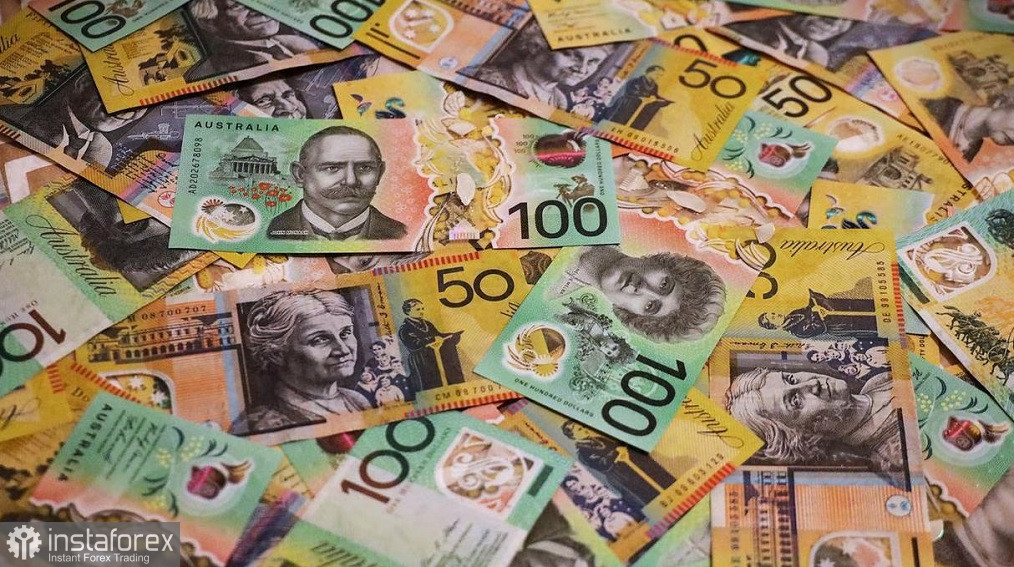The Australian dollar has been rising against the US currency for the second consecutive week, setting new local price highs. On Wednesday, the Aussie tested the 66 figure in response to Australian inflation data. The pair reached a three-week high at 0.6620, despite the US dollar's overall strengthening. The US Dollar Index was trending higher on Wednesday ahead of the Federal Reserve's announcement of the results of its October meeting. However, despite the broader rise in the greenback, the AUD/USD pair was setting new price highs, primarily due to the Australian currency's strengthening.

In general, AUD/USD traders were responding to the results of the forthcoming RBA meeting scheduled for November 4. The report published on Wednesday confidently suggests that the Reserve Bank of Australia will maintain a wait-and-see position next month and likely at subsequent meetings as well.
First of all, all components of the release came out in the "green zone," reflecting the acceleration of inflation. Thus, in September, the monthly Consumer Price Index surged to 3.5%, while the forecast was at 3.1%. Firstly, this is the maximum growth rate since July of last year. Secondly, this indicates the formation of an upward trend: the indicator has been growing (at quite active rates) for the third consecutive month.
It is important to note that the RBA primarily focuses on quarterly data, so the main attention of AUD/USD traders was precisely on this part of the release. Here, the result also favored the Aussie. In quarterly terms, the overall Consumer Price Index rose to 1.3% (the maximum value since the beginning of 2023), following a 0.7% increase in the previous quarter. Meanwhile, most analysts had forecast a more modest increase of 1.1%. Year over year, the overall CPI increased to 3.2%, up from 2.1% in the second quarter. This is the highest value for the indicator since the second quarter of last year.
The averaged CPI (Trimmed Mean CPI), which is the most accurate indicator of sustainable price trends (as it excludes the most volatile components), stood at 3.0% in the third quarter (after rising to 2.7%), hitting the upper limit of the target range (this is the highest value since the fourth quarter of 2024). The report's structure indicates that the key driver of overall inflation growth is electricity, which has significantly increased in price (+9% QoQ and 23.6% YoY). The inflation rate for goods accelerated to a five-quarter high of 3.0%, after a modest 1.1% increase in the second quarter. Food prices increased by 3.1% (compared to 3.0% in the second quarter), while alcohol and tobacco rose by 5.9% (previous value – 5.7%), and clothing increased by 2.4% (compared to 1.2%). Housing costs also increased by 4.7%, following a 2.0% rise. Transportation costs rose to 0.8%, compared to being in negative territory (-2.6%) in the second quarter.
Another important point is the rise in service-sector inflation, which accelerated to 3.5% from 3.3% in the previous quarter.
What does this release indicate in general? It suggests that the RBA is likely to maintain a wait-and-see position this year. After all, the RBA's main concern is the acceleration of core inflation. The rise in the Trimmed Mean CPI is a signal that inflationary pressure has become broader in its price structure, rather than being limited to one category.
Seasonal fluctuations (e.g., prices for vegetables, gasoline, and clothing) can be reflected in overall indicators, but the Trimmed Mean CPI is adjusted for seasonality. The main contributors to this indicator's growth were services and utilities, rather than volatile categories. The growth in the housing and services sectors (healthcare, insurance, education), which are rarely affected by seasonality, is particularly notable. This is an important point because if seasonal factors primarily drove the third-quarter inflation rise, the possibility of a rate cut in November would still be on the agenda. However, the sustainable growth of the trimmed mean indicates a deeper inflationary impulse, and therefore, the RBA will likely maintain the current rate, not only in November but also in December.
It's worth recalling the recent remarks of RBA head Michelle Bullock, who stated that the RBA's rate "may not decrease as much as those of other central banks." She also assessed positively the labor market data released last week, noting that the central bank is "in a good position concerning employment and inflation."
All of this suggests that the probability of a rate cut by the RBA in November (and likely in December) is zero.
Thus, the established fundamental background supports further growth in AUD/USD — but only if the Fed does not adopt a "moderately hawkish" stance after the October meeting (i.e., cast doubt on the likelihood of another rate cut by the end of the year). If the Fed maintains a "dovish" stance, buyers will be able to test the primary resistance level at 0.6640 (the upper Bollinger Bands line on the D1 timeframe and, simultaneously, the upper line on the W1 timeframe). Breaking through this target will open the way to the boundaries of the 67 figure.





















